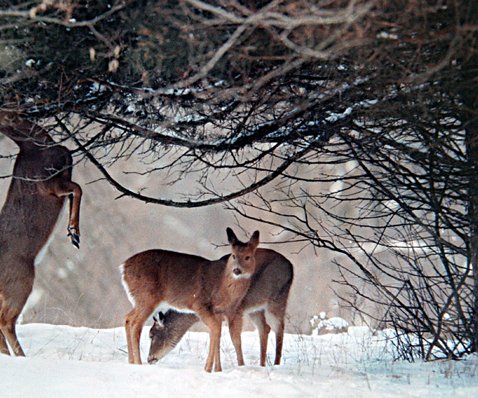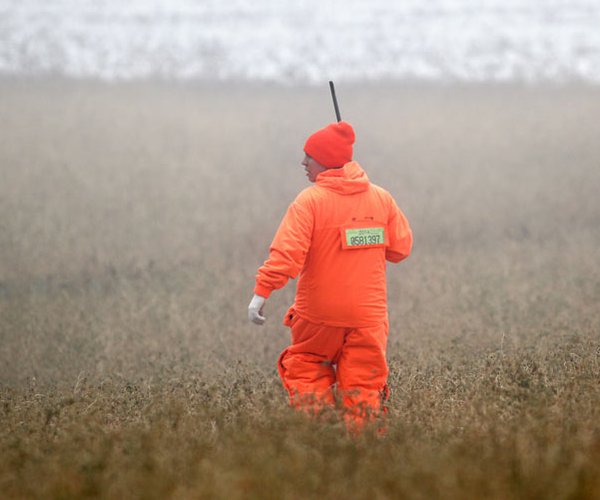The 17-year periodic cicada has returned in abundance in some parts, but in other locations bug populations have not lived up to pre-emergence hype.
Realistically for some folks 2041 is too distant to plan. Don’t miss it.
Entomologists call periodic cicadas true bugs, which have an interesting life cycle that sticks with prime numbers, 17 or 13, between emerging from the soil where they dug in after falling from a tree limb as a hatched egg.
This bug ate well, feeding from plant roots but usually not enough to kill a tree. Where the young bug first fell from a tree is where it emerges. If there was no tree in a location 17 years ago, no cicadas will emerge.
Watch for raccoons and wild turkeys feeding on emerging nymphs interested observers suggest.
The singing sound made by the male is a characteristic of interest, disturbance or dislike. The negativities stop there they ever were a concern.
The red-eyed adult never eats, bits, sucks, or vectors diseases. It sings, listens for a female’s clicking calls, and goes to her with instinct intensions. Snap your fingers.
Both die after their encounter, but not before the female lays her eggs in tree bark.
The nymphs and adults are food for many birds and many mammals.
The underground nymphs help to aerate the soil.
All this commotion will not appear again until 2041.
Trout anglers have wondered what a brown or brook trout would do if an adult cicada were plopped in a pool, with or without a hook. Some fish tales may begin to emerge later this month with the usual trout tantalizing embellishments.
Trout anglers are waiting a few days for better fishing water and clarity.
Hurray for wild turkey hunters who registered a near-record 49,759 jakes, gobblers or bearded hens. The record is 52,880 birds registered in 2008, a year after the last previous periodic cicada coming up for light and excitement. Is there any connection here? Probably not.
This registration was a 17 percent increase over last year, when 42,437 birds were taken.
The fall turkey season opens Sept. 14, 2024. Autumn’s season is open to hens and gobblers; jakes and jennies and comes the same day as new small game and archery seasons.
Wisconsin continues to be a destination location for many southern turkey hunters who say they value Wisconsin scenery, food, friendly farmers, and woodland challenges.
Turkey hunting is one of many of Wisconsin’s outdoors attractions.
Are we making the most of these visiting southern hunters?
Pheasants Forever, Inc. and Quail Forever announced hiring two Precision Ag and Conservation Specialists, who offer services at no cost to farmers to analyze their production acres to identify areas of low/marginal yield and make recommendations regarding conservation, profitability, and wildlife habitat.
The new Ag specialists are Johnny Behrendt (331-201-1496), who will focus on Northeastern Wisconsin and Anna Karels (608-475-3510), who is the specialist in southern Wisconsin.
Doug Williams, at D W Sports Center in Portage, has observed goslings and newly-hatched wood ducks, but not turkey poults.
The Wisconsin Department of Natural Resources is accepting applications for the 2024 Learn to Hunt Deer program at Sandhill Wildlife Area until July 1, 2024. For more information call 715-884-2437.
Some successful fishing, targeting panfish and catfish, is occurring, Doug Williams said. Mosquito hoards and high, muddy waters will be problems for a while according to Kate Mosley, at Kate’s bait along Hwy. 23, north of Dodgeville, Wisconsin and Brent Drake, at Tall Tails in Boscobel, Wisconsin.
Huge roadside plants are easily identified and commonly seen as they begin their bloom. Cow parsnip, with a flat flower groups and purplish stems, grow in moist soil alongside Angelica, with a rounded ball of white flowers. Both plants are five feet tall, or taller.
Golden alexander and spiderwort (blue) are blooming in lowland prairies and other habitats.
The spongy moths have done a job on oak tree leaves which will likely have an impact on acorn production and development by reducing a tree’s energy to round out white oak one-year acorns and red oak first and second year fruits.
Raspberries and blackberries, blackcaps first, are beginning to form abundant aggregate fruits. Be ready when they are with buckets, insect repellent and pie pans.
— Jerry Davis is an Argyle native and a freelance writer who lives in Barneveld. He can be reached at
sivadjam@mhtc.net or at 608-924-1112.




